



.jpg)
Le plan de Hué est réalisé selon une conception de Nguyen Van Yen. Les constituantes de l'ensemble urbain (Ville fortifiée, Ville impériale et Ville pourpre interdite) sont disposées selon le principe d'un emboîtement. Un axe nord-sud commande une répartition symétrique des immeubles et de leurs fonctions. À l'extérieur de la ville, en harmonie avec le site naturel, sont dispersés d'autres monuments: les tombes de la dynastie Nguyen sont des œuvres d'architecture et d'aménagement paysager considérables.
La densité des monuments urbains est grande. Trois enceintes successives structurent leur ensemble. La première, de style Vauban comme le bastion côtier, est entourée de bermes, douves et glacis (2,235 m de côté). L'architecture est chargée de symboles qui relèvent de la philosophie orientale et de la tradition vietnamienne, tout comme le sens qui est attaché au cadre naturel. La brique est le matériau principal auquel s'ajoutent, dans le cas des palais et lieux de culte, le bois des charpentes et les tuiles canal émaillées jaunes ou bleues. Jardins et vergers s'intègrent à l'espace monumental.
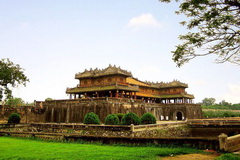
Elle sert d’entrée principale et de façade de la Cité Impériale. Construite en 1833 sous le règne de Minh Mang au moment du ré-aménagement de la Cité. La Porte du Midi constitue un ensemble d’architectures diversifié, elle...
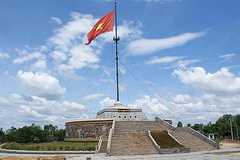
It is commonly known as a flagpole, but viewed from the Imperial City; it is really a huge structure of three flat-top pyramids, one lying on top of another. It was built during Emperor Gia Long's reign, in 1807, and later improved by his son, Emperor Minh Mang.According to the Thuc Luc...

Le tombeau de Minh Mang est situé à l’extérieur de la ville, sur le mont Cam Ke, à 12 km de Hué, sur la rive ouest de la Rivière des Parfums.En avril 1840, le roi Minh Mang changea le nom du mont "Cam Ke" en mont "Hieu Son" et donna au futur tombeau...
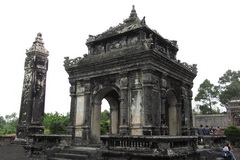
Dong Khanh's Tomb construction lasted through the lives of four Emperors Nguyen (1888-1923). That's why it bears the stamp of two architectural inclinations of two different historical periods. After being crowned, Dong Khanh had a temple built beside his father's tomb named Truy Tu...
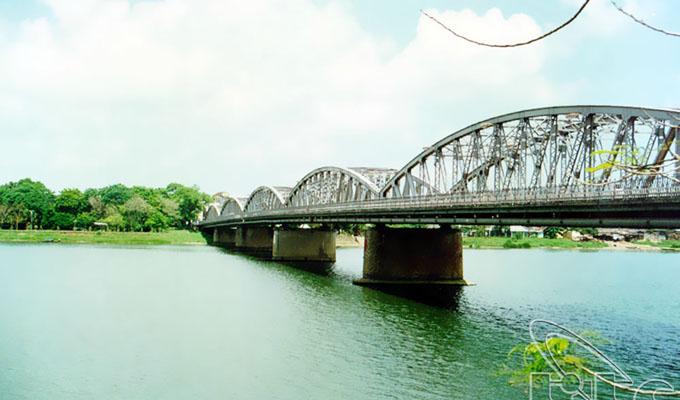
Huê ne serait pas la même sans la rivière Huong ou rivière des Parfums et le mont Ngu Binh, qui confèrent à l’ancienne cité des rois un cadre harmonieux et romantique. Une combinaison d’éléments indissociables que savent...
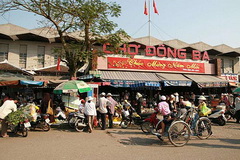
Dong Ba Market is the biggest market in Thua Thien-Hue Province.Under the reign of King Gia Long (1802-1819), there was a big market named Qui Gia near Chanh Dong (Dong Ba) Gate of Hue Citadel. The name “Qui Gia” referred to the return to Phu Xuan Capital (Hue nowadays) of Nguyen...
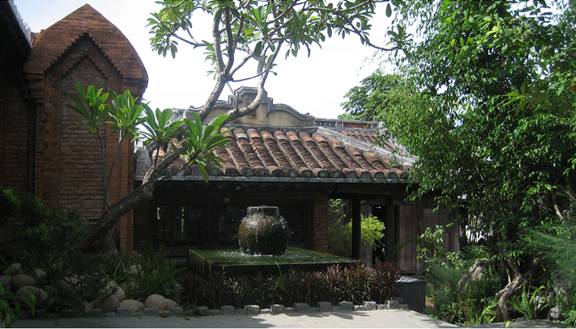
Travelling to Hue you may look for some corners where still keep remain it owns culture, architecture and a traditional food let visit Phuoc Tich ancient village with old house architectures, 500 years old temple and a collection of ceramic relics which are strong reflection of Hue culture....
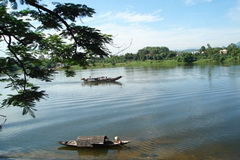
La rivière des Parfums (Sông Hương) tire son nom des nombreuses herbes médicinales qui poussaient sur ses rives. Nombreux villages de sampans avec leurs petits autels et les offrandes sur le toit, à l’intention des génies de l’eau. La...
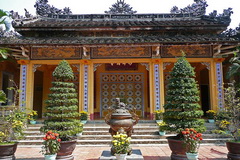
The pagoda includes a main sanctuary with two statues of the Deity Eight Vajra.Dieu De Pagoda was built by King Thieu Tri in 1844 on the platform of 5,000m² in his old residence, where he was born in 1807. It was constructed on a large scale, but was badly damaged during the successive wars....
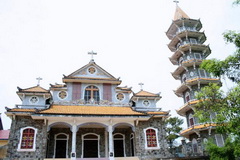
The Hermitage Bien Duc Thien An, usually name Thien Duc Hermitage, has been founded in Summer 1940 by the Bien Duc French hermits with the name of Thien An (Peace from Heaven).The hermitage is formerly managed as an infirmary and a school. To day the hermitage is only a place for religious...

Soyez le premier à connaître nos offres de voyage exclusives et les nouveaux circuits !.